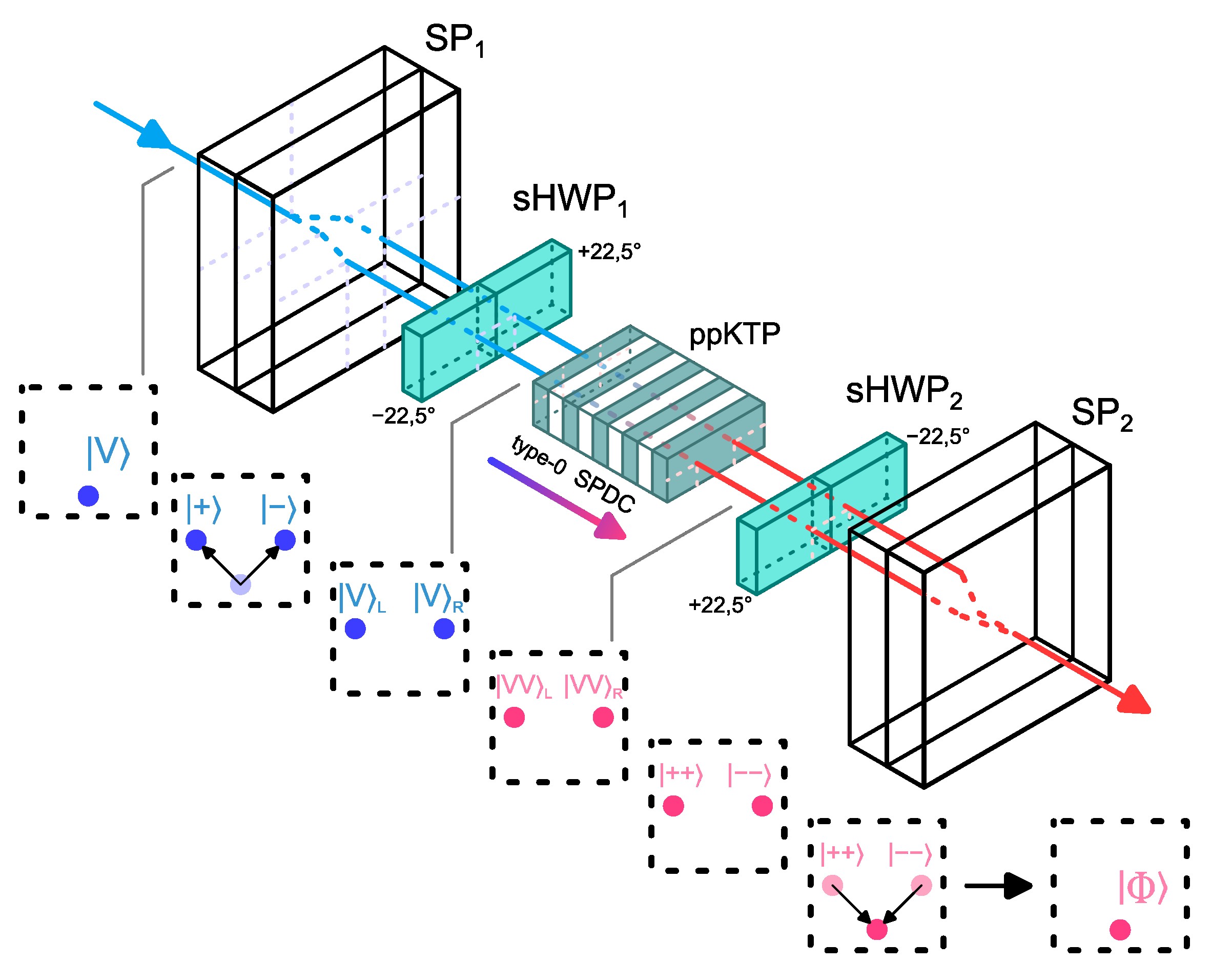SPaDEs: A look at its advantages and performance
19 March 2025
QSNP partners from ICFO introduce SPaDEs (Symmetric Parallel Displacement Entanglement Source) as a novel architecture for a polarization-entangled photon source (EPS), constituting an advancement over conventional beam displacer-based EPS designs.
The research addresses the growing need for efficient and robust entangled photon sources (EPS) that maintain exceptional phase stability, mechanical robustness, and modularity, as they are crucial for the field deployment of quantum technologies (e.g., satellite-based quantum key distribution, quantum-enhanced sensing). Their system, based on type-0 spontaneous parametric down-conversion (SPDC), leverages a new combination of spatially segmented half-wave plates and Savart plates. The latter, in particular, are composed of two identical birefringent slabs cemented together with orthogonally arranged optical axes, allowing for the generation of highly stable, polarization-entangled photon pairs.
What sets SPaDEs apart is its ability to effectively address a common problem in EPSs that use beam displacement: longitudinal walk-off. This phenomenon, where different polarization modes experience different spatial shifts as they pass through optical elements, can significantly degrade the fidelity of the entangled state. A possible solution proposed in the past has been the use of multiple nonlinear crystals; however, this has proven detrimental for broadband polarization entanglement. The paper emphasizes that using Savart plates and a single nonlinear crystal effectively mitigates these issues, representing a significant improvement over previous methods.
Conventional beam displacers (BDs) split a beam based on polarization but do not maintain the same refractive index for both polarizations. This leads to a situation where the two beams, after passing through a BD, will no longer be focused at the same longitudinal position along the propagation direction. This misalignment is referred to as longitudinal walk-off, which can be particularly detrimental when using short nonlinear SPDC crystals. For efficient entanglement generation and broadband indistinguishability, both polarization modes should experience the same nonlinear interaction within the crystal. However, with longitudinal walk-off, the two modes might interact with different regions of the crystal, leading to a mismatch in the generated entangled pairs and reducing the quality of entanglement.
The team utilized a beam displacement mechanism where vertically polarized photons were symmetrically split into two parallel beams by a Savart plate. These beams passed through a nonlinear crystal, generating entangled photon pairs. The challenge of phase control, essential for ensuring high-quality entanglement, was overcome by using a motorized tilt of the second Savart plate. This innovation allowed precise control of the phase difference between the entangled photons without the need for additional optical components. Experimental validation included measurements of two-photon interference and violations of the CHSH inequality (2.82 ± 0.04), confirming the system’s ability to produce high-quality entanglement with nearly 100% fidelity.
The elimination of walk-off offers a significant advantage when working with certain types of nonlinear crystals, particularly those of shorter lengths that are desirable in applications such as frequency multiplexing for QKD or quantum imaging techniques based on spatial correlations. In such crystals, even slight misalignments due to walk-off can severely affect the efficiency of entanglement generation.
In conclusion, the development of SPaDEs represents a step forward in the field of entangled photon sources. Its unique design will serve as a building block for scalable space-based quantum communication networks and other quantum technologies, enabling the deployment of advanced quantum systems in practical, real-world applications.
Source
High-quality entangled photon source by symmetric beam displacement design
Giacomo Paganini, Alvaro Cuevas, Robin Camphausen, Alexander Demuth and Valerio Pruneri
APL Photonics 10, 031302 (2025)
